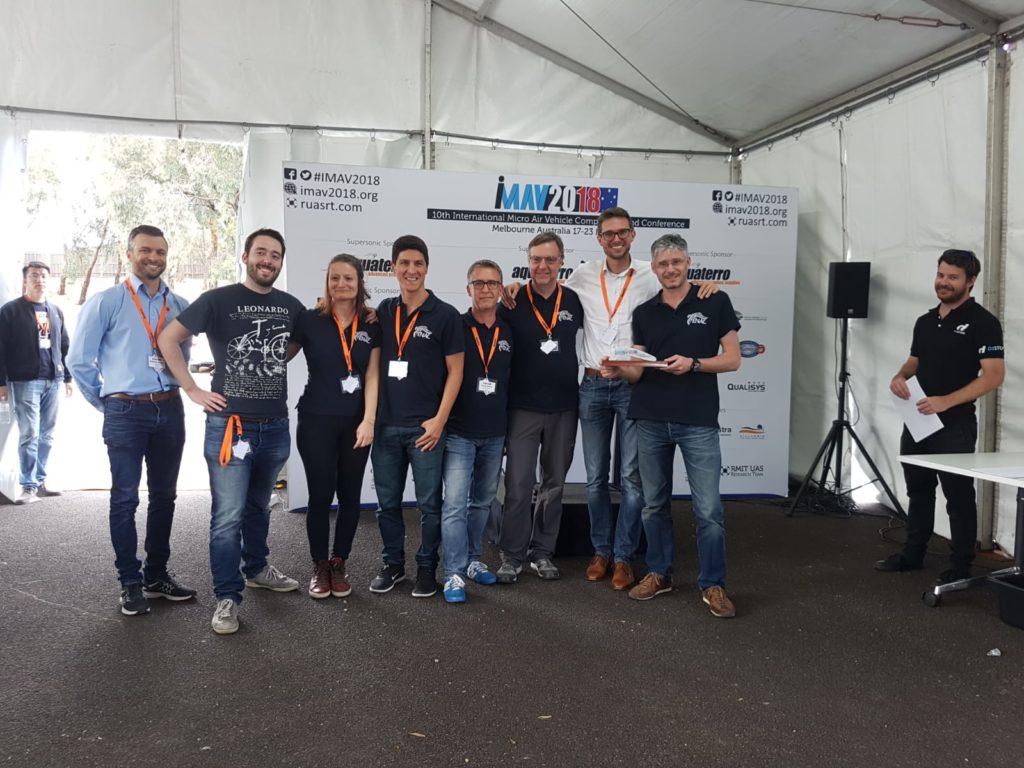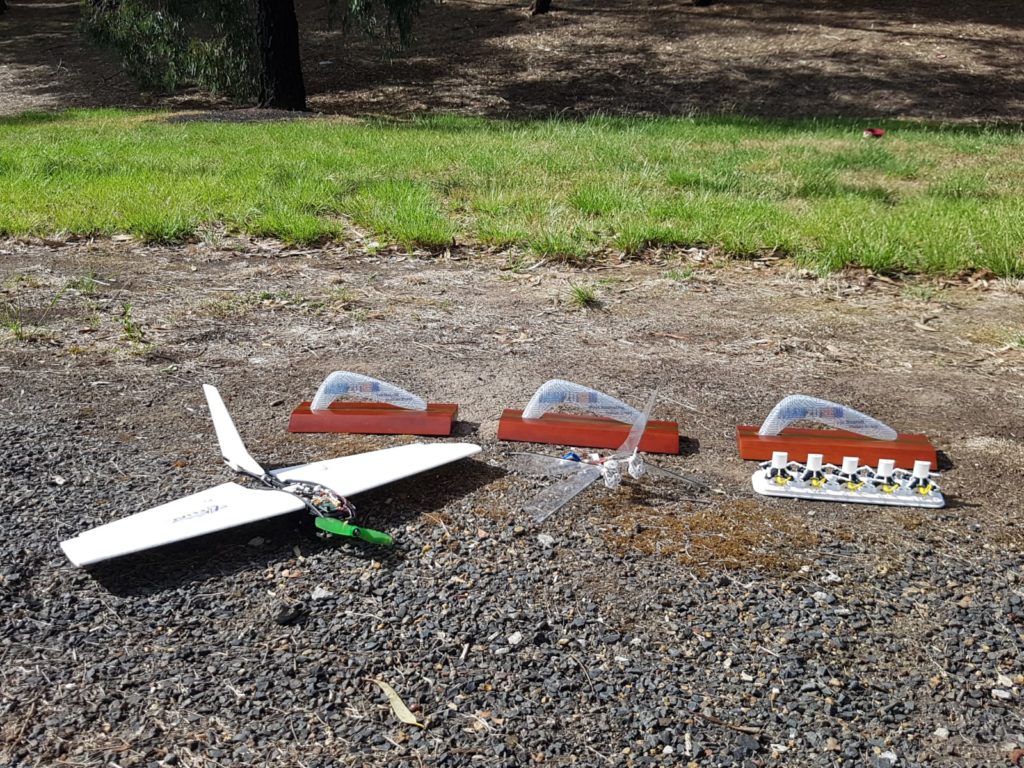A team of TU Delft and ENAC researchers has won the overall 1st prize at the outdoor competition of the International Micro Air Vehicle conference and competitions, held in Melbourne, Australia. A joint team of TU Delft’s MAVLab and ENAC, Toulouse, was the most successful at mapping a simulated disaster area and sending in a small drone to find a victim located in a forest, hidden below the canopy. The technology used at the competition has been developed by TU Delft within the context of the SESAR-JU-funded U-space project “PercEvite”, which has as goal to provide even small commercial drones with sense-and-avoid capabilities. This will help with safe integration of drones in our environment.

The International Micro Air Vehicle (IMAV) event is the main international event in the domain small drones. It combines a scientific conference with the application of beyond state-of-the-art technologies in both indoor and outdoor competitions. This year’s outdoor competition featured a search-and-rescue scenario, in which drones had to autonomously map an area, and even fly into a forest in order to look for a “wounded fireman”.
For tackling this mission TU Delft’s MAVLab teamed up together with the ENAC drone lab from Toulouse, France. Together, these labs are main contributors to the open source drone autopilot project called “Paparazzi”, which allowed smooth collaboration and integration of the code. Specifically, ENAC focused on quickly mapping the search area with a small 300-gram fixed wing drone, while TU Delft flew a small quadrotor drone into the forest to look for the fireman.
The challenge for the search task was to navigate in the forest, avoiding obstacles on the way, all with very limited onboard sensing and processing. The MAVLab is developing this type of technology within the context of the “PercEvite” project, where the aim is to make the obstacle avoidance package as small, light-weight, and cheap as possible so that even low-end drones will be able to avoid obstacles in their environment in the future. This will result in enhanced safety and greater capabilities for small drones. The preliminary obstacle avoidance package used in the competition consisted of a stereo vision system with two cameras and a small processing unit. While most commercial systems of this kind simply stop in front of obstacles, the developed system can actually plan a path around them, in order to still arrive at the goal location.

Finally, the MAVLab won the prize for the “most innovative design” in the indoor competition, in which drones had to fly through windows, gates, and follow a predetermined flight path. The prize was awarded for the demonstration of a fully autonomous version of the “DelFly Nimble”, a tailless flapping wing drone. In order to fly by itself, the DelFly Nimble was equipped with a single, small camera and a small processor allowing onboard vision processing and control. The jury of international experts in the field praised the agility and autonomous flight capabilities of the DelFly Nimble.
